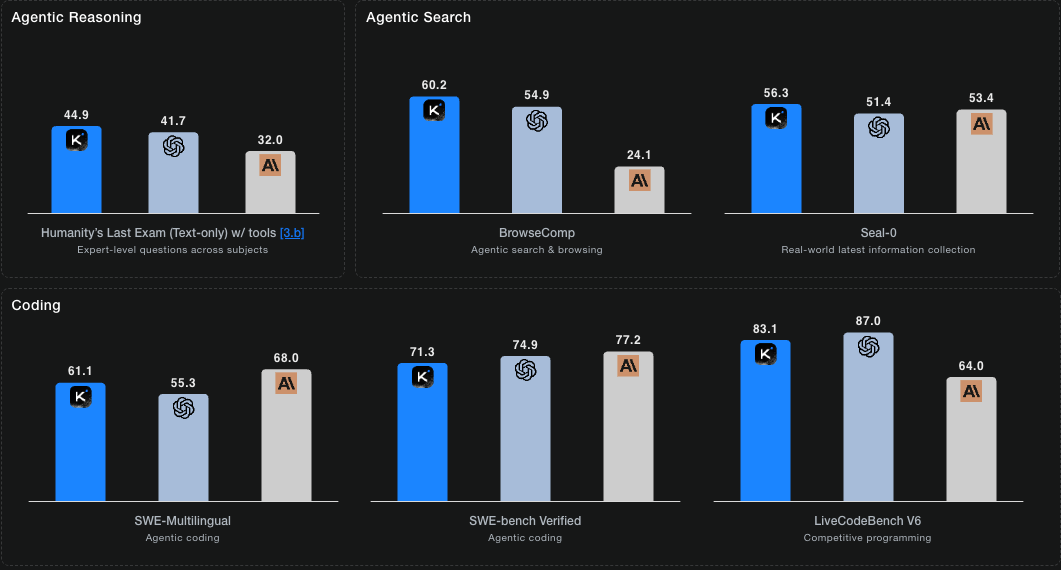
The artificial intelligence (AI) world continues to be a rapidly evolving competitive arena. The latest exciting development in this field has arrived with the introduction of Kimi K2 Thinking, the newest model from Chinese AI startup Moonshot AI. Since its announcement, Kimi K2 Thinking has emerged as the clear leader in open-source AI, significantly outperforming both existing commercial AI models and other open-source competitors in crucial areas such as logical reasoning, coding, and agentic capabilities.
Moonshot AI's latest creation is particularly notable for its advanced reasoning and problem-solving skills. In various benchmark tests released, Kimi K2 Thinking has managed to considerably surpass leading models in the field, including GPT-5 and Claude Sonnet 4.5. For instance, in a navigation and comprehension test called "BrowseComp," Kimi K2 achieved a success rate of 60.2%, decisively leading GPT-5's 54.9% and Claude Sonnet 4.5's 24.1%. These results clearly demonstrate Kimi K2's superiority in processing and understanding complex information.
The excitement around Kimi K2 Thinking is not limited to its basic reasoning abilities; its performance in "agentic reasoning" is equally remarkable. The ability of AI agents to plan and execute complex tasks over hundreds of steps without human intervention is seen as a harbinger of a new era in AI. Kimi K2 Thinking's capacity to handle 200 to 300 sequential tool calls seamlessly positions it as a significant contender in long-horizon planning and problem-solving, giving it a substantial edge over its competitors. This capability elevates it beyond being just a language model, making it a potent candidate for creating advanced digital agents capable of solving real-world problems.
In developing Kimi K2 Thinking, Moonshot AI utilized a "Mixture-of-Experts" (MoE) architecture with trillions of parameters, enabling the model to optimize memory and computational efficiency at each step. With its 256k context window, the model can process and understand long and complex texts. This powerful open-source model, now available to users, opens new horizons for AI researchers and developers while likely intensifying competition within the industry.